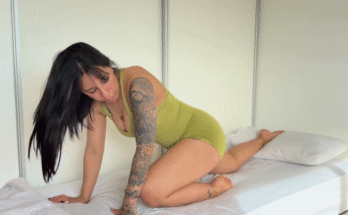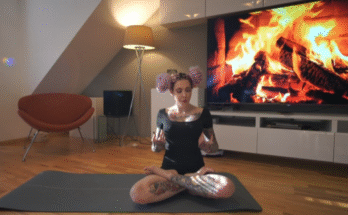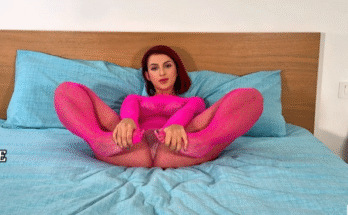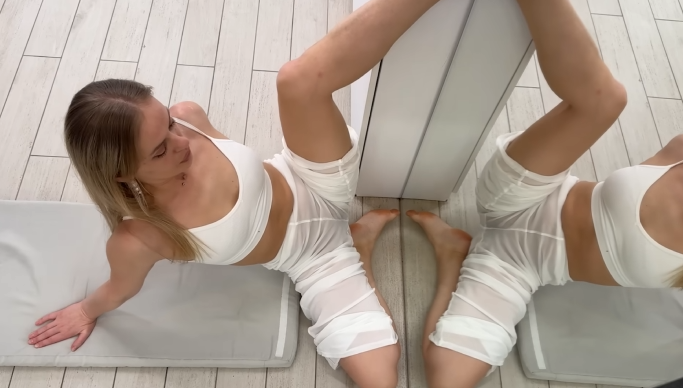
Tais walks into the sunlit studio with a big smile on her face. Her energy is calm yet focused—ready to guide you through a full-body stretching session that feels more like a moving meditation than a workout. With her soothing voice and graceful movements, Tais invites you to connect with your breath, your body, and your flexibility goals.
Why Full-Body Stretching Matters
Before diving into the session, Tais shares a few words on the importance of stretching. “Flexibility is not just about touching your toes or doing a split,” she says. “It’s about freedom in movement, reducing tension, and preventing injury. Stretching improves circulation, posture, and even mental clarity.”
Many of us carry tension in different parts of our bodies—tight hips from sitting too long, stiff shoulders from stress, or sore legs from intense workouts. A full-body stretch routine allows every major muscle group to lengthen and release. With regular practice, you’ll feel more open, agile, and at ease in your daily movements.
The Session Begins: Grounding and Breathing
Tais starts the session seated in a cross-legged position on her mat. She closes her eyes and places her hands on her knees. “Let’s begin by arriving in our bodies,” she says. A few deep inhales and exhales set the tone for the practice. With each breath, she encourages you to let go of distractions and bring your awareness inward.
After a minute of intentional breathing, she gently rolls her neck from side to side, loosening tension at the base of the skull. Shoulder rolls follow, and then a slow, circular movement of the torso. “Move like you’re stirring a pot,” Tais laughs softly, inviting playfulness into the warm-up.
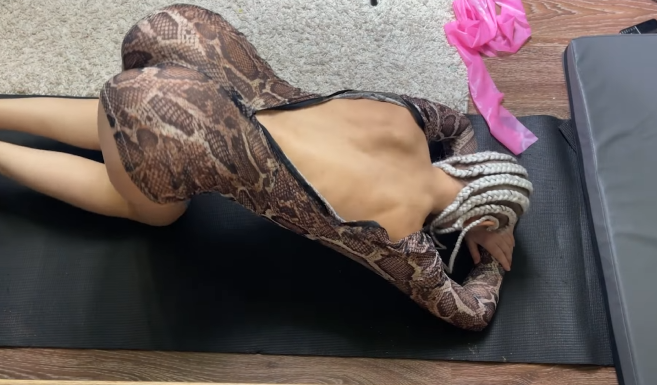
Upper Body Focus
The first part of the session targets the neck, shoulders, arms, and upper back. Tais guides a series of stretches including:
- Neck Tilts and Rotations: To release tension in the neck and improve range of motion.
- Eagle Arms (Garudasana variation): This deepens the stretch between the shoulder blades.
- Thread the Needle Pose: One arm slides under the other while in tabletop position, helping to open the upper back and relax the shoulders.
Tais reminds you to breathe deeply as you hold each stretch, staying present with the sensations. “If you feel tension, don’t fight it. Just observe it. Let the breath do the work.”
Spine and Core Engagement
Next, Tais transitions into gentle spinal movements to bring mobility to the back and engage the core. She leads a Cat-Cow Flow, arching and rounding the spine with each breath, syncing movement with rhythm. From there, she guides you into Seated Side Bends and Twists, creating space between the ribs and improving spinal rotation.
“Think of your spine like a wave,” Tais says. “Each vertebra wants to move, and each twist invites you to detox and renew.”
To connect with the core, she includes a few Dynamic Seated Forward Folds, encouraging you to hinge from the hips and elongate the spine without collapsing. These stretches promote flexibility in both the lower back and hamstrings.
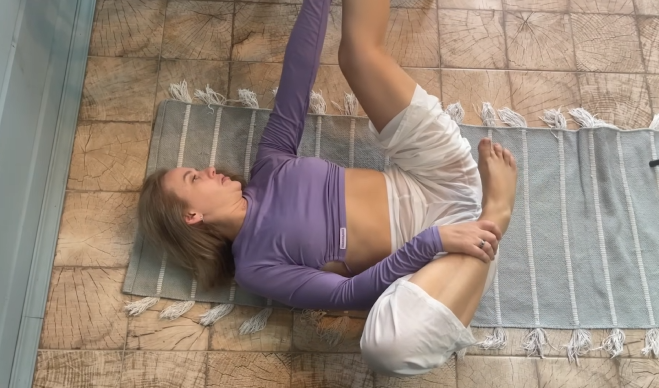
Hips and Hamstrings
One of the highlights of the session is the focused attention on the hips—a common area of tightness for many people. Tais gently eases into Lizard Pose, Butterfly Pose, and Figure Four Stretch, offering modifications for all levels.
“Don’t rush this part,” she says. “Your hips hold a lot—emotions, stress, and daily strain. Allow them time to release.”
Next, she transitions into Standing Forward Folds and Half Splits, targeting the hamstrings and calves. With every stretch, she encourages micro-adjustments: flexing the toes, bending the knees slightly, or shifting the weight to feel the stretch in a new way.
Quads and Hip Flexors
From a low lunge position, Tais brings attention to the front of the legs. These stretches target the hip flexors and quadriceps—muscles that often tighten from long periods of sitting or intense exercise.
Her sequence includes:
- Low Lunge with Backbend: Opening the front body while strengthening the back.
- Quad Stretch in Half-Kneel: Reaching back to grab the foot and drawing the heel toward the glute.
- Camel Pose (Ustrasana): A more advanced option that invites a deep stretch in the entire front line of the body.
Tais encourages everyone to listen to their own limits. “Stretching is not about forcing,” she reminds. “It’s about allowing.”
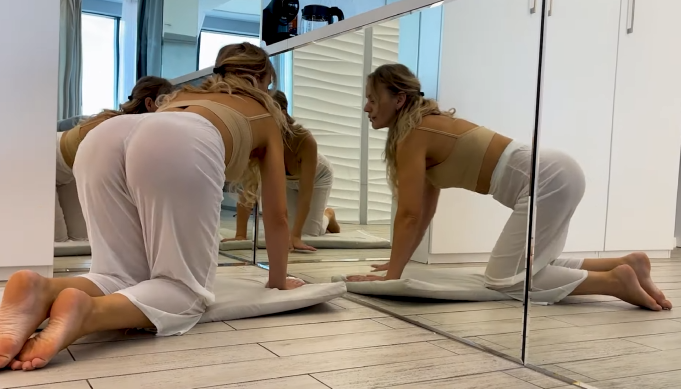
Glutes, Back, and Relaxation
The final section of the practice targets the glutes, lower back, and overall relaxation. In Supine Pigeon and Happy Baby Pose, she focuses on releasing the lower body while keeping the breath steady and deep. She also adds a gentle Spinal Twist on the Back, inviting the body to completely relax into the mat.
To end the session, Tais guides a short Savasana—a moment of stillness where the body can absorb all the benefits of the practice. She encourages gratitude for your body and its ability to move, stretch, and support you.
Tips from Tais
As the session concludes, Tais offers some practical advice for incorporating full-body stretches into your routine:
- Stretch Daily, Even for 10 Minutes: Consistency beats duration.
- Warm Up Before Deep Stretching: A short walk or light movement helps.
- Use Props if Needed: Straps, pillows, or blocks can support deeper comfort.
- Stay Hydrated: Hydrated muscles are more pliable and less prone to injury.
- Listen to Your Body: Pain is a signal, not a challenge.
The Afterglow
After practicing with Tais, you feel lighter, taller, and more in tune with your body. Her holistic approach to flexibility goes beyond just the physical—it nurtures the mind and the breath as well. Whether you’re a beginner or an experienced yogi, her full-body stretches are a perfect reset for your day.
So roll out your mat, press play, and let Tais guide you through a session that leaves you feeling flexible, refreshed, and fully connected.
